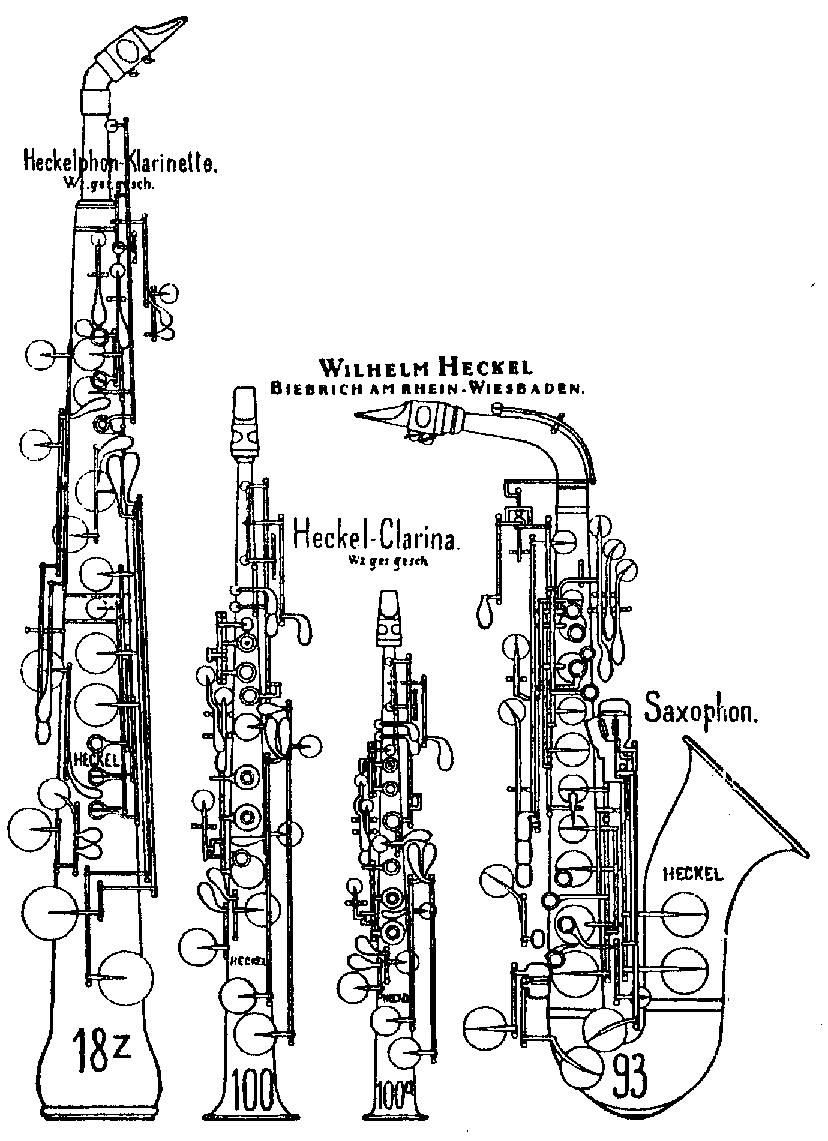About: Heckelphone-clarinet Goto Sponge NotDistinct Permalink

The heckelphone-clarinet (or Heckelphon-Klarinette) is a rare woodwind instrument, invented in 1907 by Wilhelm Heckel in Wiesbaden-Biebrich, Germany. Despite its name, it is essentially a wooden saxophone with wide conical bore, built of red-stained maple wood, overblowing the octave, and with clarinet-like fingerings. It has a single-reed mouthpiece attached to a short metal neck, similar to an alto clarinet. The heckelphone-clarinet is a transposing instrument in B♭ with sounding range of D3 (middle line of bass staff) to C6 (two ledger lines above the treble staff), written a whole tone higher. The instrument is not to be confused with the heckel-clarina, also a very rare conical bore single reed woodwind by Heckel but higher in pitch and made of metal, nor with the heckelphone, a doub
| Attributes | Values |
|---|---|
| rdf:type | |
| rdfs:label |
|
| rdfs:comment |
|
| foaf:depiction | |
| dcterms:subject | |
| Wikipage page ID |
|
| Wikipage revision ID |
|
| Link from a Wikipage to another Wikipage | |
| Link from a Wikipage to an external page | |
| sameAs | |
| dbp:wikiPageUsesTemplate | |
| thumbnail | |
| has abstract |
|
| gold:hypernym | |
| prov:wasDerivedFrom | |
| page length (characters) of wiki page |
|
| foaf:isPrimaryTopicOf | |
| is Link from a Wikipage to another Wikipage of | |
| is Wikipage redirect of | |
| is related of | |
| is foaf:primaryTopic of |


![[RDF Data]](/fct/images/sw-rdf-blue.png)
OpenLink Virtuoso version 08.03.3330 as of Mar 19 2024, on Linux (x86_64-generic-linux-glibc212), Single-Server Edition (378 GB total memory, 50 GB memory in use)
Data on this page belongs to its respective rights holders.
Virtuoso Faceted Browser Copyright © 2009-2024 OpenLink Software




![[cxml]](/fct/images/cxml_doc.png)
![[csv]](/fct/images/csv_doc.png)
![[text]](/fct/images/ntriples_doc.png)
![[turtle]](/fct/images/n3turtle_doc.png)
![[ld+json]](/fct/images/jsonld_doc.png)
![[rdf+json]](/fct/images/json_doc.png)
![[rdf+xml]](/fct/images/xml_doc.png)
![[atom+xml]](/fct/images/atom_doc.png)
![[html]](/fct/images/html_doc.png)